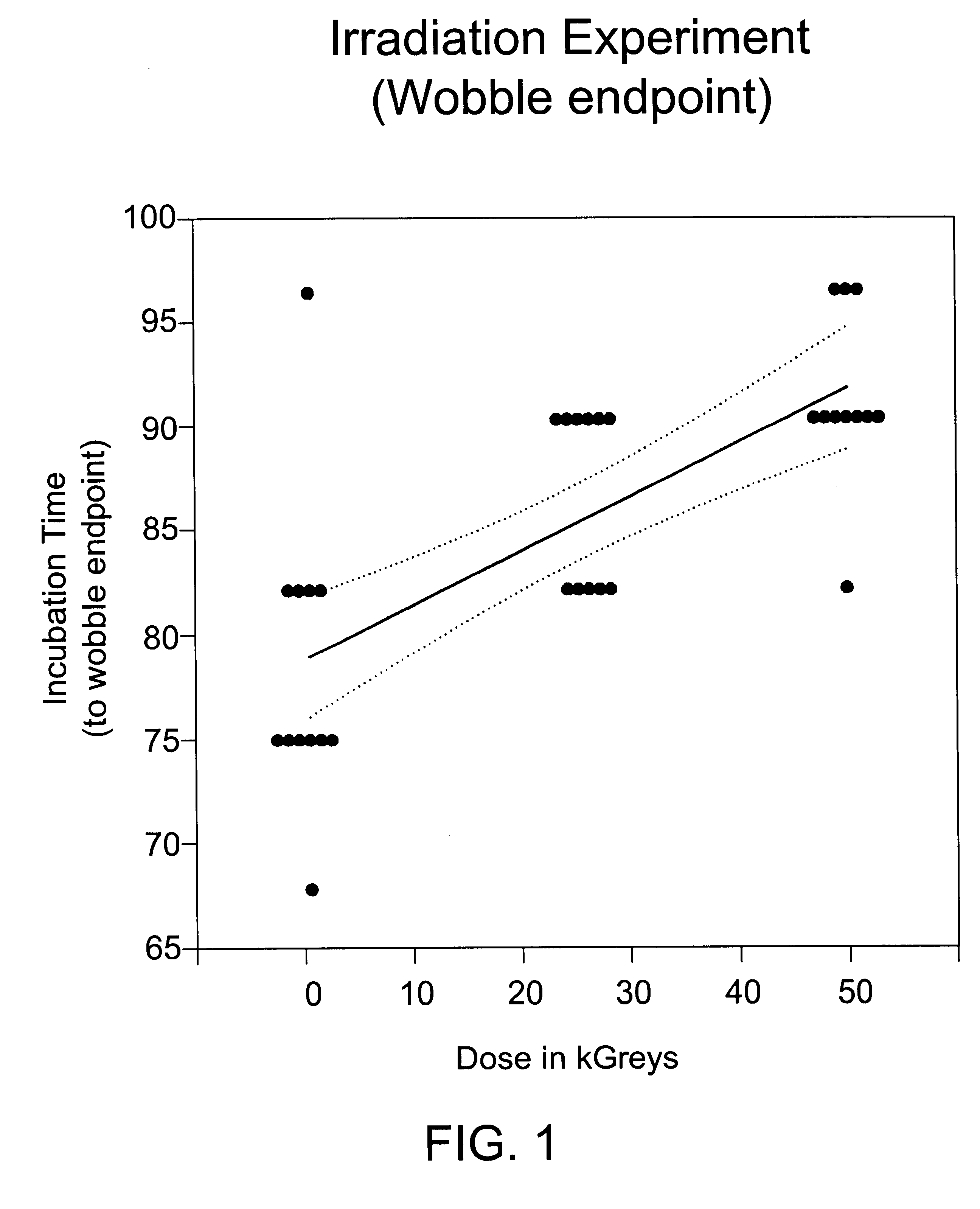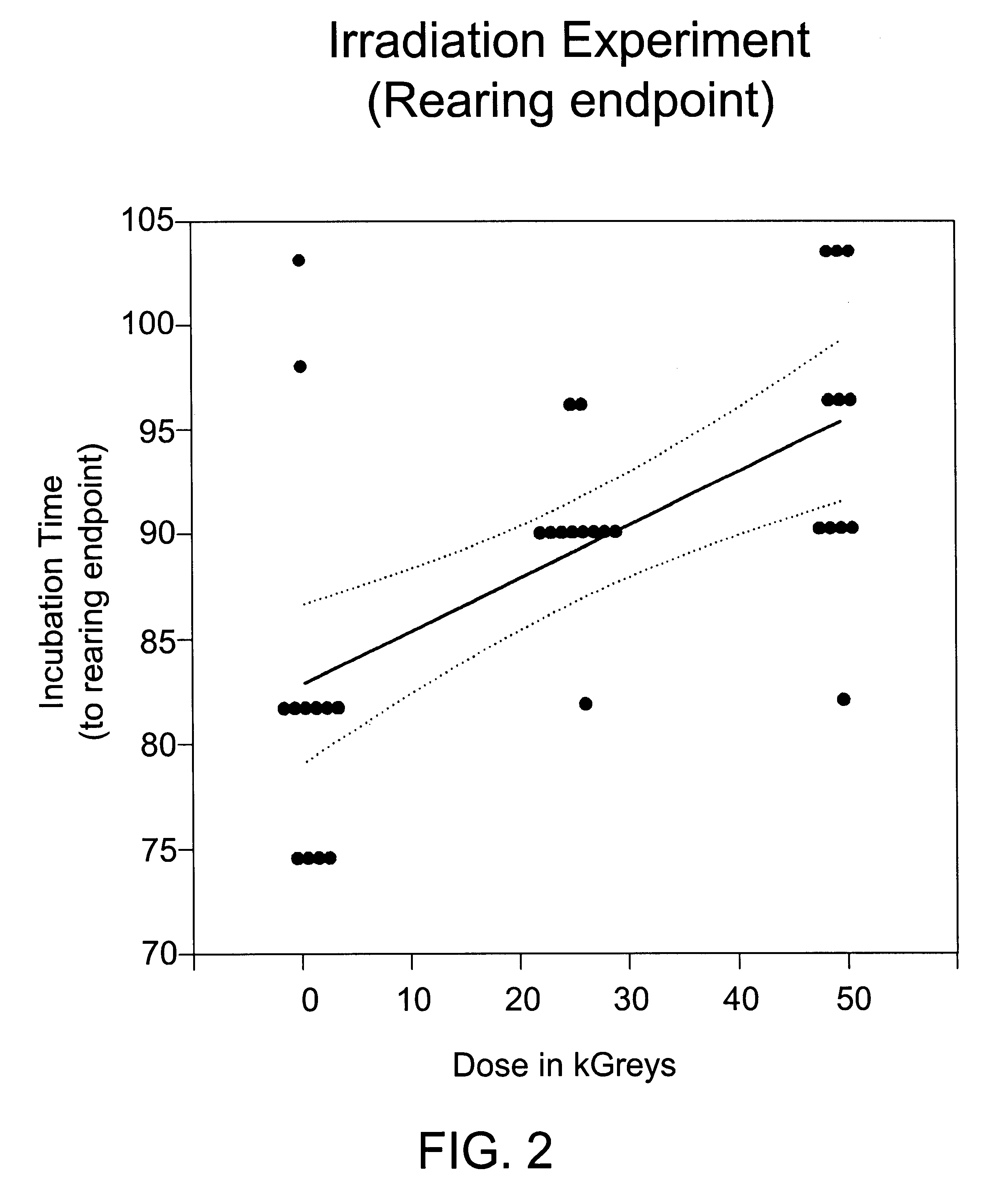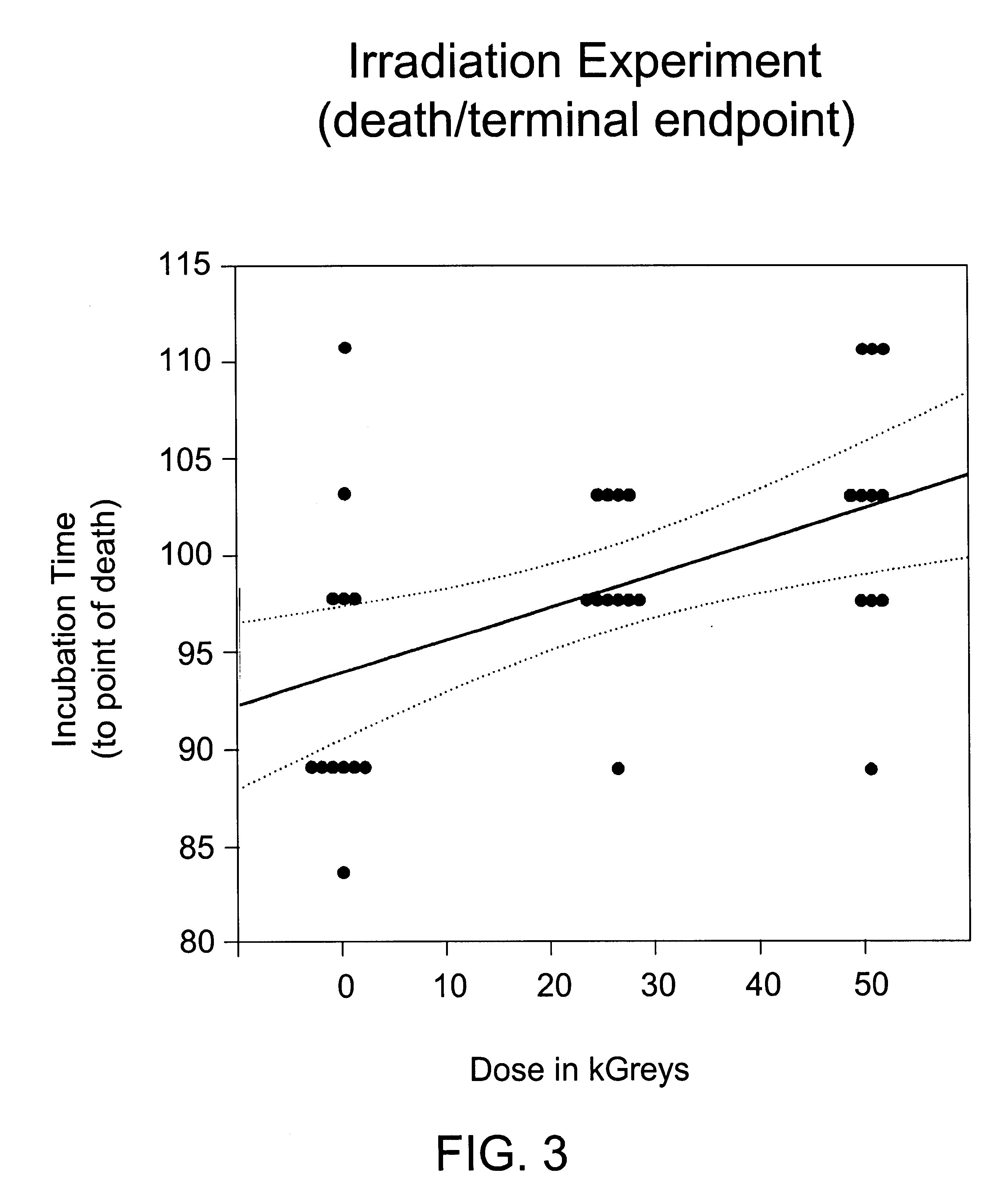Methods for sterilizing biological materials
a biological material and method technology, applied in the field of methods, can solve the problems of not always reliable, inability to detect the presence of certain viruses, and inability to use experimentally, so as to reduce the temperature of biological materials, and reduce the residual solvent content of biological materials
- Summary
- Abstract
- Description
- Claims
- Application Information
AI Technical Summary
Benefits of technology
Problems solved by technology
Method used
Image
Examples
example 1
[0090]Human albumin (25%) was spiked 1:100 with 10% brain homogenate from hamster adapted scrapie (strain 263K). The sample was mixed by vortexing, and 4 6-ml aliquots of scrapie-spiked albumin were dispensed into 10-ml serum vials. One vial was stored at −80° C. as a frozen control. Three vials were taken to a commercial irradiation facility. One vial (the 0 kGy control) was refrigerated to prevent bacterial growth. The remaining vials were irradiated at ambient temperature (20-25° C.) at a rate of 0.4 kGy / hr to a total dose of 26 or 50 kGy. Radiation dose was assessed by dosimeters attached to each vial and by external dosimeters placed in close proximity to the vials. The irradiated samples and the 0 kGy control were assayed for scrapie infectivity.
[0091]Infectivity was assayed by intracerebral inoculation of 0.05 ml of sample into 12 hamsters, which were then held for up to 6 months for observation. Three clinical endpoints were assessed: wobble, failure-to-rear and death. There...
PUM
| Property | Measurement | Unit |
|---|---|---|
| Fraction | aaaaa | aaaaa |
| Fraction | aaaaa | aaaaa |
| Fraction | aaaaa | aaaaa |
Abstract
Description
Claims
Application Information
 Login to View More
Login to View More - R&D
- Intellectual Property
- Life Sciences
- Materials
- Tech Scout
- Unparalleled Data Quality
- Higher Quality Content
- 60% Fewer Hallucinations
Browse by: Latest US Patents, China's latest patents, Technical Efficacy Thesaurus, Application Domain, Technology Topic, Popular Technical Reports.
© 2025 PatSnap. All rights reserved.Legal|Privacy policy|Modern Slavery Act Transparency Statement|Sitemap|About US| Contact US: help@patsnap.com



